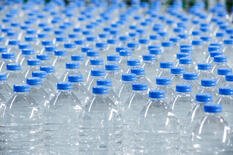The International Bottled Water Association (IBWA) released a statement in January citing the following data from their Harris Poll: 72% of Americans say that bottled water is among their most preferred non-alcoholic beverage.
“The results of this (Harris Poll) are consistent with the recent consumption figures that show, for a third year in a row, bottled water is the No. 1 packaged beverage in the United States”, said Jill Culora, IBWA’s vice president of communications, in a statement at the time of the announcement. 
As the demand for bottled water increases, so do the packaging and logistics challenges. Bottled water is hard to palletize and wrap securely. Liquids are heavy, unstable, and reductions in primary and secondary packaging make it even harder to create a safe-to-ship load. In-transit damage can create lost sales opportunities, extra work and strained business relationships. And given the margins on the product – damage is just not an option.
A leading bottled water company has teamed up with Lantech to develop a system to achieve the necessary containment force, reduce excess packaging, and maintain profit margin. As a result, the company was able to reduce its stretch film usage per load by 26%, achieved a sustained containment force, and at the same time reduced the use of cardboard, plastic and other secondary packaging.
You can read more about those results in our Case Study and White Paper on our beverage industry page. You can also download our guide, “Three Things to Know About Stretch Wrapping in the Single-Use PET Industry” for free!
This post was published on September 9, 2019 and updated on September 9, 2019.
September 9, 2019
